The Evolution of Intel GPUs: From Integrated Graphics to Battlemage (Release December 2024 Expected).
Intel has long been synonymous with CPUs, dominating the market with its innovative processor technologies. However, its journey into the world of GPUs has been an evolving story, moving from integrated graphics solutions to the discrete GPU market. In this blog post, we’ll dive deep into Intel’s GPU history, its progress through various generations, the competitive positioning of its current offerings, and the anticipated Intel Battlemage GPUs expected to launch in December 2024.
A Brief History of Intel GPUs
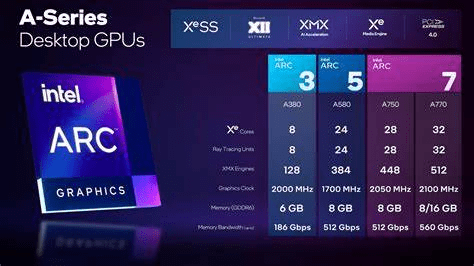
Intel began its foray into graphics with integrated solutions embedded within CPUs. These Integrated Graphics Processors (IGPs) (Visit INTEL) were sufficient for everyday tasks but fell short for gaming or intensive workloads.
Early Integrated Graphics:
- Intel HD Graphics (2009-2016): Introduced with the Nehalem architecture, Intel HD Graphics focused on basic rendering and multimedia support. It marked Intel’s first step in integrating GPUs within CPUs.
- Intel UHD Graphics (2017-2020): The Kaby Lake and Comet Lake series brought improved performance with support for 4K media and basic gaming capabilities.
- Iris and Iris Pro:
- Introduced for higher-performance laptops, the Iris lineup (starting in 2013) included more execution units and faster clock speeds. Iris Pro further improved performance with embedded DRAM, making it a viable option for casual gamers.
- Xe Graphics Architecture (2020):
- The leap to the Xe architecture was a pivotal moment for Intel. Introduced with Tiger Lake processors, Xe-LP offered significant performance gains over previous generations, supporting light gaming and modern APIs like DirectX 12 and Vulkan.
- Joystick / HOTAS – AMAZON.com
- Rudder Pedals – AMAZON.com
- Throttle Quadrant – AMAZON.com
- Gaming Chair – AMAZON.com
- VR Headset – AMAZON.com
Intel’s Discrete GPU Journey to Intel Battlemage GPU
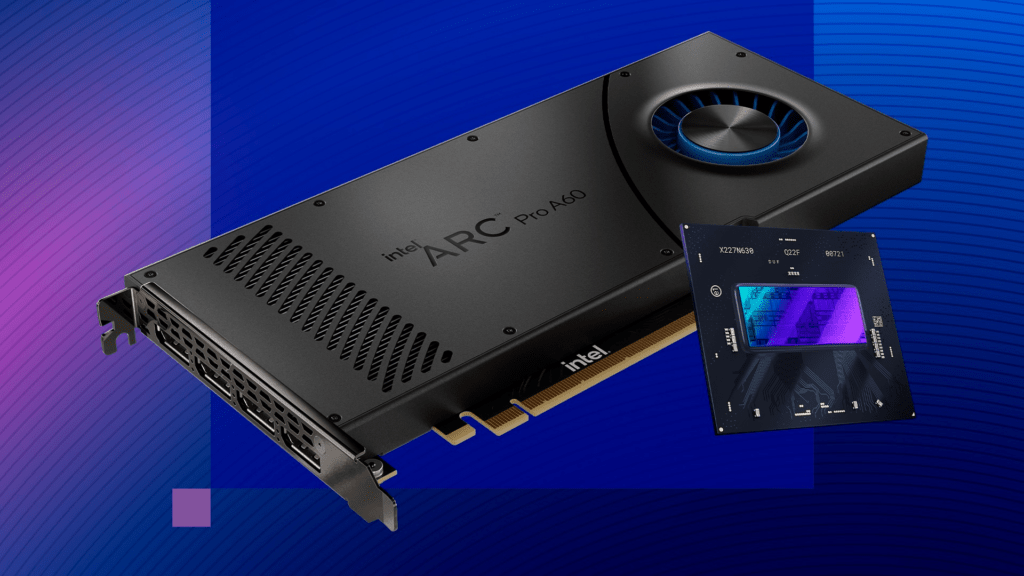
Intel’s bold move into discrete GPUs began in earnest in 2022 with the Arc Alchemist series. Aimed at mid-range gaming and productivity, the Arc series marked Intel’s transition from being a CPU-centric company to a full-stack computing solution provider.
Arc Alchemist (2022)
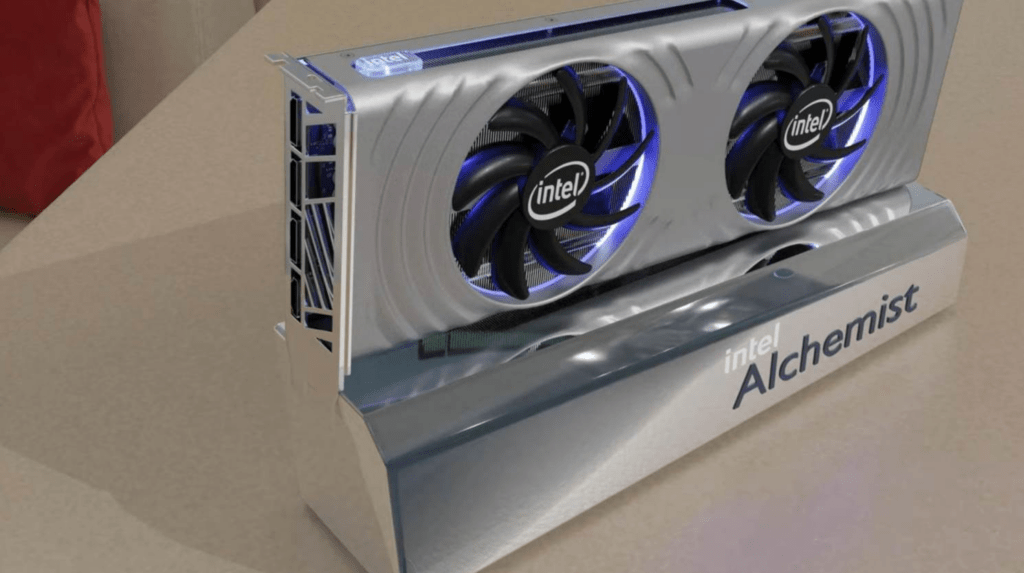
The Intel Arc Alchemist (A-series) GPUs debuted in mid-2022, targeting entry-level to mid-range gaming PCs. Built on TSMC’s 6nm process, these GPUs leveraged the Xe-HPG (High-Performance Gaming) architecture, a direct evolution of the Xe-LP design.
- Key Features:
- Support for DirectX 12 Ultimate and hardware-accelerated ray tracing.
- XeSS (Xe Super Sampling), Intel’s AI-driven upscaling technology, competing directly with NVIDIA’s DLSS and AMD’s FSR.
- AV1 encoding support, a standout feature for content creators.
- Performance Overview: The flagship A770 performed close to NVIDIA’s RTX 3060 in rasterization, with ray tracing performance lagging slightly. The entry-level A380, however, was positioned for casual gamers and esports titles, competing with AMD’s RX 6400 and NVIDIA’s GTX 1650.
Intel Arc Alchemist Benchmarks
| GPU | Raster Performance (1080p Avg FPS) | Ray Tracing (1080p Avg FPS) | Price (2023) |
|---|---|---|---|
| Intel Arc A770 | ~75 (RTX 3060 level) | ~40 (Below RTX 3060) | $329 |
| Intel Arc A750 | ~65 (RX 6600 level) | ~30 | $249 |
| Intel Arc A380 | ~40 (GTX 1650 level) | N/A | $139 |
Despite being Intel’s first discrete GPUs, the Arc Alchemist series showcased promising potential, though driver issues initially plagued the lineup. Over time, firmware updates improved performance significantly.
Upcoming Intel Battlemage Intel GPUs: Intel’s Next Leap
Expected to launch in December 2024, the Battlemage (B-series) GPUs represent Intel’s second-generation discrete GPU lineup, designed to compete more aggressively with NVIDIA and AMD. Leaks suggest Battlemage will introduce the Xe2-HPG architecture, building upon Alchemist’s foundation with refinements in efficiency, AI, and ray tracing capabilities.
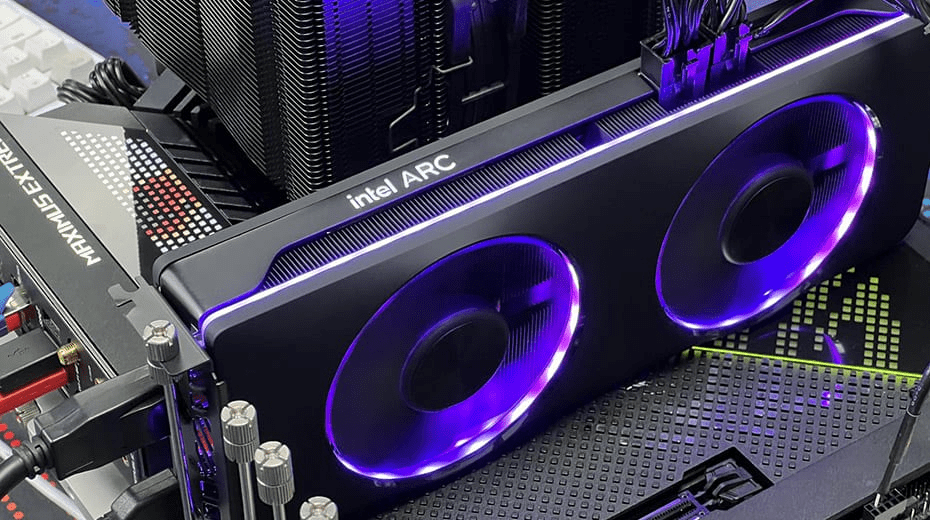
Leaked Specifications and Features
- Architecture:
- Xe2-HPG: Enhanced ray tracing cores, improved energy efficiency, and better scalability.
- Support for DirectX 12 Ultimate, Vulkan 1.3, and enhanced AI features.
- Performance Targets:
- BMG-G10 (flagship GPU): Competes with NVIDIA’s RTX 4070 Ti and AMD’s RX 7800 XT.
- BMG-G21 (mid-range GPU): Targets the RTX 4060 Ti and RX 7700 XT.
- Memory and Bandwidth:
- High-speed GDDR6X memory on flagship models.
- Improved memory compression techniques for higher efficiency.
- AI and Upscaling:
- XeSS 2.0: Major improvements in upscaling quality and performance, rivaling DLSS 3.
- AV1 Encoding:
- Leading the market with dual AV1 encode streams, making Battlemage a standout choice for streamers and creators.
Competitive Positioning: Can Intel Intel Battlemage GPUs Compete with the Big Boys?
Intel’s GPUs sit in a unique position, targeting the mid-range market where price-to-performance is a key metric. The following breakdown compares Intel’s offerings with AMD and NVIDIA:
Current Market Comparison
| Metric | Intel Arc (Alchemist) | NVIDIA (RTX 40 Series) | AMD (RX 7000 Series) |
|---|---|---|---|
| Performance | Mid-range | Dominates high-end, solid mid-range | Strong across all tiers |
| Price | Competitive | Premium-priced | Competitive to value-oriented |
| Drivers | Improving, but not perfect | Industry-leading | Reliable |
| AI Features | XeSS (Good) | DLSS 3 (Excellent) | FSR 3 (Good) |
| Ray Tracing | Decent | Best-in-class | Competitive |
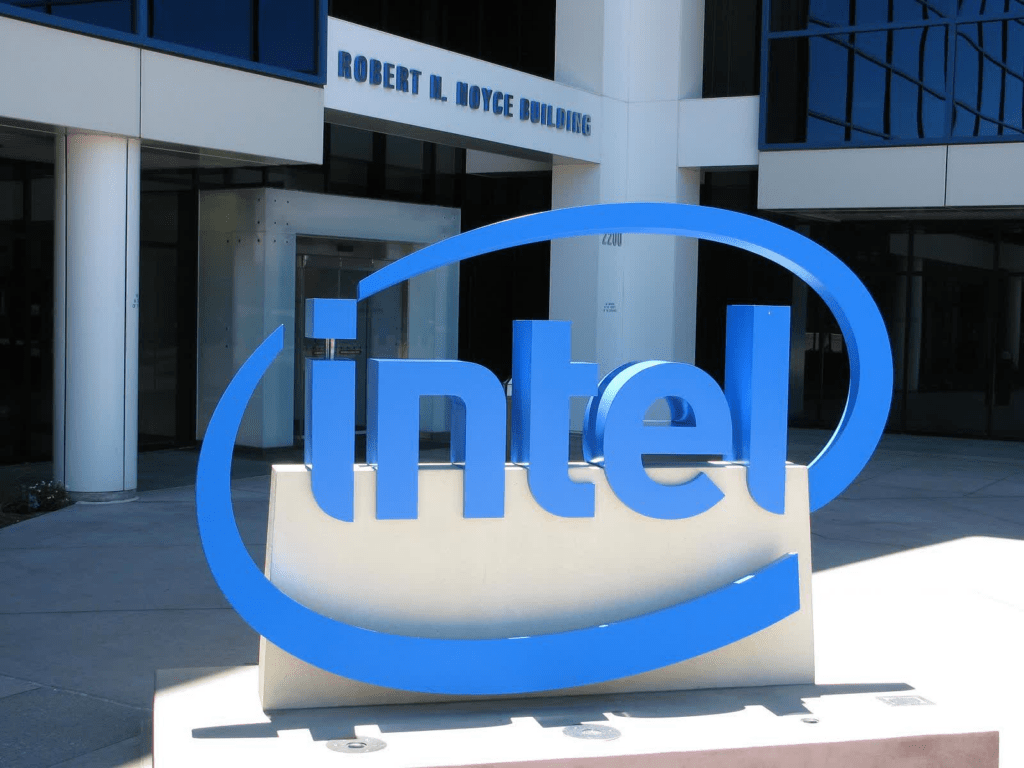
Challenges for Intel:
- Market Entrenchment: NVIDIA and AMD’s dominance creates a challenging landscape for Intel to break into.
- Driver Perception: Early issues with Arc Alchemist drivers have led to skepticism, though updates have mitigated this.
Public Opinion:
Intel’s GPUs are largely seen as promising, with growing trust among budget-conscious gamers. However, enthusiasts and professionals remain cautious, waiting for Battlemage to prove Intel’s commitment to high-performance GPUs.
Predicted Intel Battlemage GPU Benchmarks
| GPU | Estimated 1080p FPS (Raster) | Estimated 1080p FPS (Ray Tracing) | Price (Estimate) |
|---|---|---|---|
| BMG-G10 | 120+ (RTX 4070 Ti level) | 60+ (Near RX 7800 XT level) | ~$549 |
| BMG-G21 | 90+ (RTX 4060 Ti level) | 45+ (RX 7700 XT level) | ~$399 |
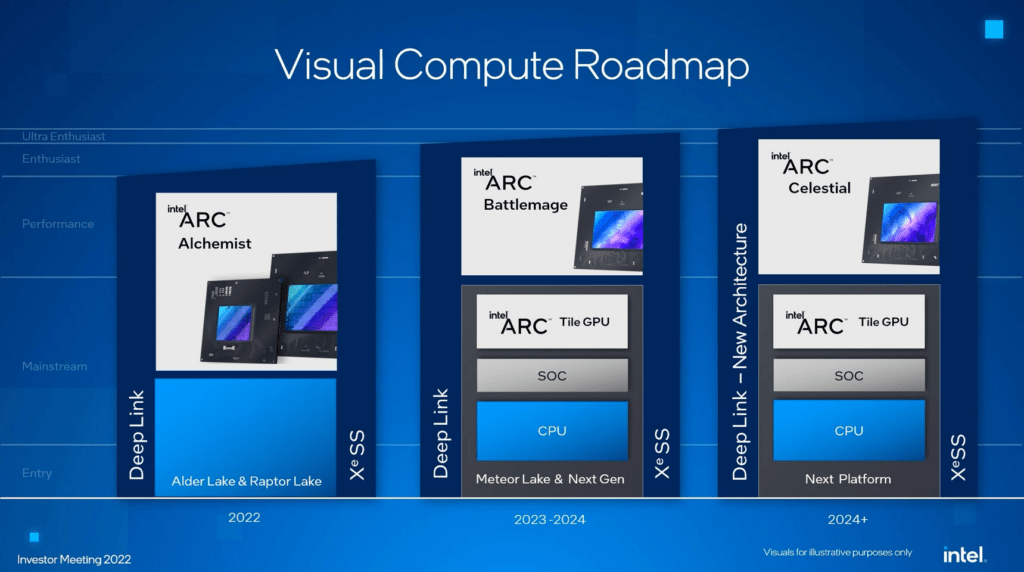
The Future of Intel GPUs
Intel’s Battlemage launch will be crucial in determining its long-term viability in the GPU market. If the new series delivers on leaked performance expectations, Intel could establish itself as a genuine competitor to AMD and NVIDIA, especially in the mid-range and budget segments.
As Intel gains more experience, the Celestial (C-series) GPUs, expected in 2026, promise further advancements, potentially targeting NVIDIA’s and AMD’s high-end dominance.
- Latest CPU’s Available Now – Amazon.com
- Get a NEW GPU Best Performance – AMAZON.com
- Upgrade RAM Here today – AMAZON.com
- Prebuilt PC Options – AMAZON.com
Conclusion
Intel’s journey in the GPU market has been a mix of challenges and triumphs. The Arc Alchemist series demonstrated Intel’s potential, while Battlemage holds the promise of leveling the playing field with better performance, features, and pricing. While Intel still has to contend with entrenched competitors, its innovations in AV1 encoding, AI upscaling, and price-to-performance ratios have carved out a niche among gamers and creators.
As Battlemage arrives in December 2024, the eyes of the gaming and tech communities will be on Intel. Can it solidify its position as a genuine competitor, or will it remain an ambitious underdog? Only time—and benchmarks—will tell.

Author
Brendon McAliece (Aka Gunnie) is a military veteran with 23 years working on Jet Fighters, their weapons systems and ejection seat/module systems as well as munitions and R&D. Involved with flight simulation since the 1980s, he has flown all the major flight simulators over the years.
He is an Australian expat who has lived in Malaysia, UK, Saudi Arabia and more recently Thailand. He is a multi-lingual blogger who loves to share his life experiences here on LetsFlyVFR.com and DreamingGuitar.com, with his lifestyle and Travel experiences Blog plus his Dreaming Coffee website.
Learn More @ DreamingGuitar.com – DreamingCoffee.com – LetsFlyVFR.com
( HOME – BLOG – SHOP – ABOUT )
As an Amazon affiliate I may benefit from qualifying sales.
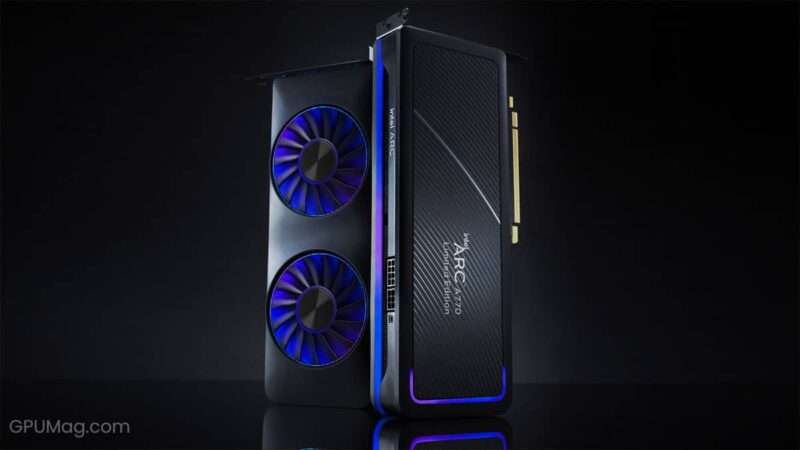
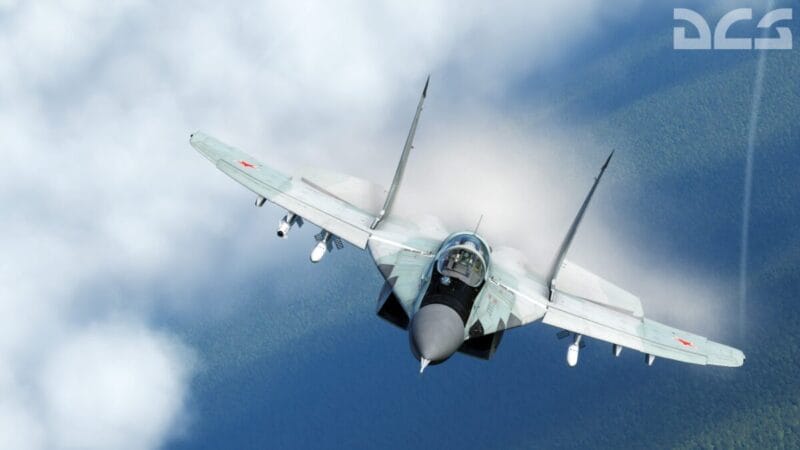








2 responses to “The Evolution of Intel GPUs: Integrated Graphics to Intel Battlemage GPU.”